Hi! I am Jeff Lopez an expert in the Home Decor and Furnishing Industry. I am not the owner of the content which has been published here. This content is only for informational purposes. This content belongs to the respective owners and I do not hold any right for this content.
Don't wanna be here? Send us removal request.
Text
The Role of Investing Books in Building Long-Term Money Habits

Investing in books plays a crucial role in building long-term money habits by providing clear guidance on saving, budgeting, and growing wealth. They simplify complex concepts, helping readers develop the patience and discipline needed for financial success. Alongside learning, incorporating creative bedtime story ideas for kids can make evenings enjoyable and educational, supporting both financial knowledge and family bonding.
0 notes
Text
Interactive Activities Inspired by Kids’ Investing Books
Children learn best when they are actively engaged. While reading investing-themed books introduces valuable concepts like saving, budgeting, and growing money, interactive activities help reinforce those lessons. These hands-on experiences transform abstract financial ideas into meaningful life skills. Whether it's through role-play, games, or mock businesses, kids can turn reading into real-world practice.
Saving Challenges and Budget Trackers
One of the simplest activities inspired by investing stories is creating a personal savings challenge. After reading about characters who set goals and save over time, children can do the same with a clear savings jar or envelope. Adding stickers, progress charts, or coloring trackers makes the process fun and visual. They can set goals for toys, gifts, or even donations, mimicking the decisions their favorite characters make in the stories.
Mini Market Simulations at Home or School
Stories that include buying, selling, and investing often reflect libertarian kids' books, which emphasize voluntary exchange, entrepreneurship, and decision-making. These themes enhance role-play games, teaching financial concepts through freedom-driven, hands-on experiences.
Start a Small Venture Inspired by Story Plots
Children's investing books often feature young characters starting small businesses, like lemonade stands, handmade crafts, or digital services. After reading, kids can brainstorm and plan their mini-ventures. This activity encourages them to think creatively, calculate costs, set prices, and track earnings.
Story-Inspired Investment Journals
After reading a book, children can keep an “investment ideas” journal. Here, they can jot down business ideas, savings goals, or lessons they learned from characters. They might reflect on what worked for the characters and how they’d act differently.
Board Games and Flash Cards Based on Key Terms
Create board games or flashcard sets featuring vocabulary and principles introduced in the books—terms like assets, liability, income, expense, investment, and budget. Kids can play matching games or trivia rounds that deepen their understanding while having fun. Including scenarios from the stories helps personalize learning and ties abstract words to relatable situations.
Debates and Discussions on Financial Choices
Books often present dilemmas—should the character invest, spend, or save? Hosting small debates or guided discussions lets children explore multiple perspectives. They can take sides, defend choices, and reflect on different outcomes.
This nurtures critical thinking and helps children understand that financial decisions aren’t always simple. In libertarian-themed books, kids can examine how freedom of choice and personal responsibility play out in each scenario.
Conclusion: Turning Stories Into Skills
Interactive activities rooted in kids’ investing books provide a bridge between imagination and reality. Through games, simulations, and journaling, children build confidence in their financial understanding.
These exercises go beyond the page—encouraging personal initiative, decision-making, and economic thinking. By transforming lessons from books into playful practice, we nurture not only future investors but thoughtful, independent-minded individuals.
0 notes
Text
Libertarian Lessons Hidden in Classic Kids Books
Children’s books often seem like simple stories, full of magic, animals, and adventures. But many libertarian kids books teach freedom, responsibility, limited control, thinking for oneself, and finding one’s path.
In Alice’s Adventures in Wonderland, Alice is constantly faced with strange situations and must make her own choices. There are no clear rules, and adults are often unhelpful or even silly. Yet Alice learns to trust her judgment. This teaches children the importance of thinking independently and questioning strange or unfair authority.
Freedom in “The Tale of Peter Rabbit”
Peter Rabbit disobeys his mother and sneaks into Mr. McGregor’s garden. Though he gets into trouble, the story doesn’t punish him harshly — instead, it shows that freedom comes with consequences. Peter learns to be careful, but he also acts bravely. This tale shows the balance between freedom and responsibility.
Courage and Self-Reliance in “The Wizard of Oz”
Dorothy’s journey in The Wizard of Oz is a strong example of self-reliance. She finds herself in a strange land, far from home, with no one to guide her. Along the way, she makes friends and faces many challenges. But through it all, she learns that the power to get home was inside her all along.
Breaking the Rules in “Matilda”
Matilda is about a smart little girl who loves to read and think. She is surrounded by adults who try to control her — from her dishonest parents to the cruel school headmistress.
But Matilda uses her mind, her books, and her quiet courage to stand up to them. This shows how important it is for people, even children, to resist unjust rules and create their own paths. Her story is a celebration of freedom and learning.
Respect for the Individual in “Charlotte’s Web”
In Charlotte’s Web, a pig named Wilbur is saved by his friend Charlotte, a spider who believes every life has value. This book teaches respect for the individual, no matter how small or ordinary they may seem. It encourages kindness, understanding, and the belief that each being should be free to live without fear or control.
Conclusion
Many classic children's books quietly teach powerful ideas. They show kids the value of thinking for themselves, taking responsibility, and respecting others’ freedom. These are the same ideas celebrated by libertarian kids and adults alike — showing that even in the world of talking animals and magical lands, the love for liberty shines bright.
0 notes
Text
The Best Age-Appropriate Ways to Teach Kids About Saving Money

Teaching kids about money early sets the foundation for smart financial habits. The best age-appropriate ways to teach saving include using clear, simple examples and interactive tools like chore-based allowances or visual savings goals. As children grow, introducing concepts like budgeting and delayed gratification helps build real-world understanding. These methods make teaching kids about money both fun and effective, preparing them for a financially responsible future.
#FinancialLiteracyForKids#TeachKidsAboutMoney#MoneyLessonsForChildren#KidsAndMoney#EarlyFinancialEducation#SmartMoneyHabits
0 notes
Text
The Importance of Teaching Kids About Money Early
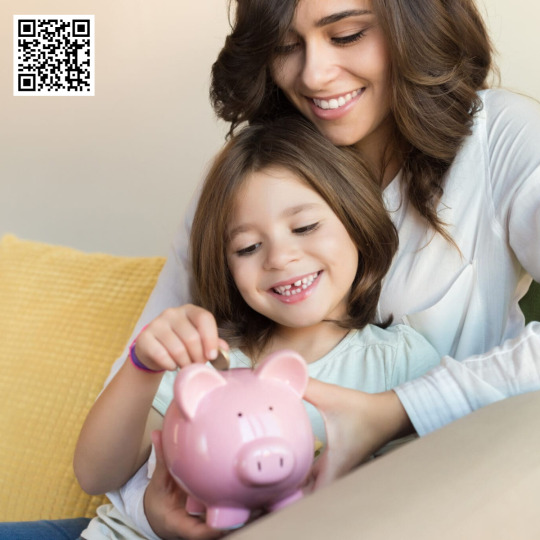
Teaching kids about money early is crucial for their financial well-being. By introducing concepts like budgeting, saving, and spending responsibly, children develop essential skills that will serve them throughout life. Money management for children fosters a sense of responsibility and prepares them for real-world financial decisions. Early lessons in money management help kids become financially literate adults, reducing the risk of poor financial habits in the future.
#MoneyManagementForKids#FinancialLiteracyForChildren#KidsAndMoney#TeachingKidsFinance#FinancialEducation#ChildrenMoneySkills
0 notes
Text
Where Does Money Come From? Unveiling the Journey of Currency Creation

Where does the money come from? Money is created by governments through banks, which print currency and regulate its value. People earn money by working in various jobs and exchanging their time and skills for wages. This currency is then used to buy goods and services, circulating within the economy to meet needs and drive commerce.
0 notes
Text
Where Does Money Come From? How To Teach Kids About This?

To teach kids about money, start by explaining that money comes from work. People earn money by performing jobs, such as teachers teaching, doctors, or truck drivers delivering goods. You can also tell them that the government prints money, which is then used to buy things they need or want. Discuss the idea of saving, spending, and budgeting. Finally, use fun activities like pretend play, where they can "earn" money for tasks, to help them better grasp where the money comes from and how it is used in everyday life.
0 notes
Text
Choose a mattress for Baby

The mattress is an essential part of a baby's bedding. Your baby spends nearly 18 hours a day on his mattress during his first months. We consider that a baby spends as many hours on his mattress in 2 years as an adult spends in 5 to 6 years.
To choose the right mattress for kids , you must focus on safety, comfort and the quality of the air he breathes. This way your child will be comfortably seated in bed and will be able to enjoy calm nights with fewer night awakenings. He will thus be able to benefit from a quality sleep that helps his physical and psychological development.
Choose a safe mattress for your baby:
First of all, it is important to check that your baby's future mattress complies with decree 2000-164 of 23 February 2000, relating to the safety of certain bedding items. Decree guaranteeing the hygiene of the mattress and aimed at protecting people against certain fire risks. All baby mattresses comply with this decree.
It is important to choose a baby mattress that perfectly matches the size of the bed. There should be no gap between the mattress and the bars of the bed. It would be dangerous to fill a space with a rolled towel or duvet. Choose a mattress with a thickness suitable for toddlers: a baby mattress should be between 10 and 13 cm thick. A thicker mattress would not provide any additional comfort.
Choose a healthy mattress for your baby:
To offer a quality sleep to your child while taking care of his health, well-being and environment, prefer a mattress made of natural material. Unlike synthetic materials, they do not contain any petroleum derivatives and are softer for the skin. Our mattresses made of natural materials are guaranteed without any chemical treatment or toxic solvents, so there is much less risk of allergic reaction when baby is in contact with the mattress. Some mattresses are coated with aloe vera, a natural material with many regenerative, healing and soothing properties. Mattresses with aloe vera coated covers are particularly suitable for babies with reactive skin or those prone to contact allergies.
Natural materials are more breathable, they ensure good air circulation between the fibres, so moisture is better evacuated and baby perspires much less, which limits the risk of night awakenings.
Our mattresses are made of natural materials such as Tencel®, which is used in the composition of mattress covers, latex and coconut fibre. Natural materials allow excellent moisture wicking, which limits the proliferation of bacteria and mites. A mattress made of natural materials is therefore antibacterial and anti-mite without any chemical treatment.
The most famous of our mattresses is undoubtedly the coco latex mattress, a 100% natural mattress made of coco fibre and natural latex. The combination of these two materials makes the mattress ultra breathable and naturally antibacterial and anti-mite. All mattresses are Oekotex Standard 100 certified, so they are guaranteed to be safe for health and the environment.
All mattresses are removable very easily thanks to a zip that goes all around the mattress. The cover is machine washable to ensure impeccable hygiene. Regular washing of the mattress cover in the machine is much more effective than chemical anti-mite treatment and much healthier for baby's health.
To protect your baby's mattress, don't forget to protect it with a sheet, so choose a breathable sheet (also called a micro-aerated sheet). Avoid PVC sheets that block air circulation and cause sweating and discomfort for your child. Breathable sheets are a good complement to the natural mattress, the combination of the two allows a good temperature regulation and a good moisture evacuation, so baby perspires less, he sleeps better.
0 notes
Text
What Firmness of Mattress Is Best for a Toddler?
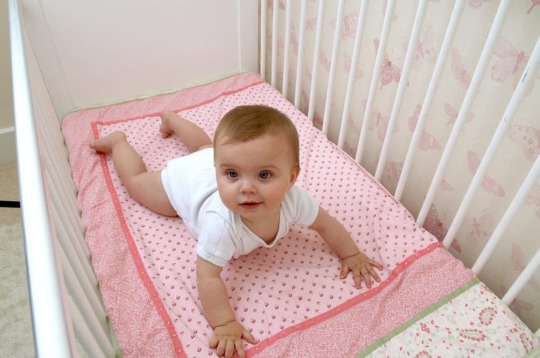
The day your little one moves from the crib to the big-kid bed is a special milestone. And just as you stressed before your child’s birth about finding the right crib mattress, you are likely experiencing the same thing now with the purchase of a toddler mattress. You are right to be taking the decision seriously because choosing the right mattress for kids helps them get a better night sleep while giving them the support they need.
Rule of Thumb
Mattresses that are too fluffy can conform to a child’s face and potentially smother them. For this reason, select a firm mattress for your toddler instead. But toddlers do not require the same amount of firmness in their mattress as they did as infants. Mattress firmness is rated using the Indentation Load Deflection rating which measures on a scale from 12 to 50. Anything above a rating of 36 indicates a firm mattress. Using a crib mattress as a toddler mattress offers a fine option that should not have any negative impact on your child, as long as it is still in good condition.
Material Considerations
Mattresses have coils, springs, wool, cotton or memory foam. It does not matter what materials go into making your toddler's mattress, as long the materials create a firm one. But each mattress filler offers specific benefits that others do not. For example, cotton mattresses contain breathable materials, which makes them the better choice for children with allergies. In contrast, wool mattresses maintain warmth but are often culprits in increasing allergies in children who are already susceptible. Coil-and-spring mattresses offer plenty of support for a small child’s body. Memory foam -- though it gets hot -- provides durability and good support.
An Issue of Size
Toddler mattresses for toddler-sized beds are typically the same size as crib mattresses. Because they are the same size, there are dual-sided mattresses available that offer a very firm side for infants and a medium-firm side for toddlers. Twin and twin extra-long mattresses also offer appropriate sizes for toddlers when matched with the correct bed frames.
Maintaining Firmness
A waterproof mattress cover over your toddler's mattresses protects it from stains and moisture and enables you to do quick clean ups when the inevitable accidents happen. More importantly, waterproof covers also help prevent the breakdown of mattress materials, which assists in maintaining firmness.
0 notes
Text
Best Mattresses for Kids
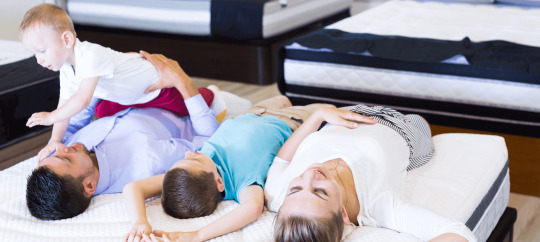
A mattress guide for kids
So much of a child’s health, wellness, performance in school and sports, and stamina in other activities relies on the quality of his or her sleep. While most parents monitor this in many ways, limiting screen time at night and enforcing a strict “lights out,” it’s easy to overlook the condition of your child’s mattress. A mattress can have lasting effects on a child’s health and sleep quality, but often goes overlooked in the day-to-day business of raising a family.
You’ve put together this short but thorough reference guide for busy parents searching for the best mattress options for their kids. Based on our research, thousands of customer reviews, and the unique needs of growing children You can read a quick review of each of them here as they discuss their pros and cons and the reasons they stand out.
You know that creating a safe and non-toxic environment for your family comes first, and the same goes when shopping for a new mattress. So, they’ll cover the challenges of finding the right mattress to work for a growing family, and the potential effects of different mattress materials and components on your child’s sleep.
The importance of sleep for children
According to the National Sleep Foundation, sleep has a direct impact on both the mental and physical development of your child at any age. There’s no wondering why when you see the statistics. The NSF explains that children by the age of 2 have spent more time asleep than awake, and that children on average will spend 40% of their childhood sleeping. Clearly, paying attention to the quality of your child’s sleep and their comfort and safety while sleeping is critical.
The sleep guidelines endorsed by the American Academy of Pediatrics recommends anywhere from 8-16 hours of sleep per day for children, depending on their age. This recommendation includes 12-16 hours for babies and 8-10 hours for teens.
Adequate and quality sleep, according to the AAP, impacts the following:
Attention
Behavior
Learning
Memory
Emotional regulation
Quality of life
Mental health
Physical health
In light of these recommendations and guidelines, it’s clear that the right mattress does have an impact on your child’s overall well-being. A quality, well-made, and comfortable mattress can definitely help your child get the right amount of sleep. It will also ensure that during the hours they spend sleeping they are supported physically, sleeping soundly, and kept safe from harmful substances.
Top picks for the best twin mattress for kids meet safety guidelines and a few of them go above and beyond to provide eco-friendly and all-natural materials. Consider the amount of time your child will spend in close proximity to the mattress and be sure to check for features such as CertiPUR-US certified foam. All-natural wool offers a non-toxic alternative for traditional fire-retardants. It is not advisable to purchase a mattress without understanding the materials used in its construction.
0 notes
Text
Children’s Mattress Buying Guide

You can’t beat a good night’s sleep. It is essential that children get the right amount of sleep quality and quantity because it is crucial for their health and well-being.
Picking The Right Mattress
The foundation of a good night’s sleep starts with a sturdy bed frame and comfortable mattress and because we spend a third of our lives in bed, it is important that you make the right choice.
We have hand-picked a collection of mattresses which we recommend to suit all budgets and requirements. From a sprung coil mattress to a foam mattress; and those with fantastic airflow and cooling technology… it can be confusing trying to select the right mattress for your child but we’re here to help.
Children’s mattresses come in open-coil, pocket-sprung, latex foam and memory foam. Each design offers different qualities and benefits.
Mattress technology and manufacturing techniques have developed substantially over the last decade, therefore, the traditional open coil sprung mattresses that you probably had as a child are less popular than the more modern, advanced mattress specifications. Nowadays, it is very common for a mattress to be vacuum packed in plastic, straight off the production line and rolled up ready for delivery, regardless of it being a foam or pocket sprung foam mattress.
The springs within a mattress give your child the ‘core’ support they need. Therefore, the spring type, thickness of the gauge (wire), the total number of coils and, height of each spring will alter the tension of the mattress. The mattress cover and fillings will also affect the ‘feel’ of mattress. When looking for a sprung mattress it’s good to keep in mind that the higher the spring count, the better the support. Coil gauge is another one to look for… a lower gauge number means thicker coils and will therefore make the mattress firmer as a result.
There is no industry standard to compare firmness ratings but the information we have given on the product pages are what the manufacturer have rated their own mattresses. Basically, our mattress buying guide understands that mattress comfort is very subjective to each individual and can feel different depending on weight distribution, but most manufacturers offer their mattresses in soft, medium or firm options.
Foam mattresses are used for their cushioning effect and are usually made up from layers or different foam densities to achieve the correct levels of zoned comfort.
The mattress cover (sometimes known as the ticking) can also vary. Some covers may be quilted, super soft, zipped and removable, whereas, a more traditional mattress will be tufted and stitched. Covered in high quality woven or knitted viscose or cotton yarns or made from polypropylene or polyester, there are various covers to choose from.
Memory foam and mattresses with special qualities such as anti-dust mite, anti-allergy, anti-bacterial, breathable, absorbent, temperature regulating and fire retardant, are now widely incorporated into mattress specifications and come highly rated for children if they are sensitive and have allergies and asthma.
Foam mattresses that include latex and memory foam are measured by density. The higher the number, the firmer the mattress will be.
Choosing the best twin mattress for kids is so very important to give them the best quality and the right quantity of sleep each and every night.
0 notes
Text
What is the Best Mattress for Children?
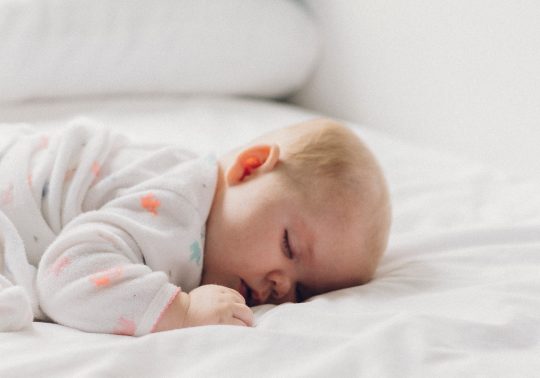
As a parent, you may agonize over every decision you make for your children. From the choice of pediatrician to the schools they attend and even the things we purchase for them.
The primary objective you have as parent is to raise happy, healthy children. It seems like such a simple proposition. But, every parent knows there are so many big and small things that go wrong, despite your best intentions.
When it comes to buying mattress, it is important to not only find a mattress that is safe for your children to sleep on, but to find a mattress that will offer room for your children to grow. These are a few things you should look for when you’re looking for the best mattress for your children.
Made with Natural or Organic Materials
Natural materials mean more than you may realize when it comes to something as vital as mattresses.
The National Sleep Foundation recommends that children between the ages of one and two sleep as many as 11 to 14 hours every day. Preschool children between the ages of three and five should get between 10 and 13 hours of sleep daily. School aged children, up to the age of 13 are recommended to get between 9 and 11 hours of sleep, while even teens still need eight to ten hours of sleep daily.
What does this mean? It means your children are going to spend plenty of hours in bed each day so it’s important to choose a mattress that is not made with materials that will harm them.
Buying a mattress that is made with natural and/or organic materials in your mattress ensures that your child will sleep on a safe mattress.
Mattresses that Aren’t Recommended for Children
Mattresses that contain harmful chemicals and things like polybrominated diphenyl ethers PBDEs and volatile organic compounds (VOCs) should be avoided for children. Here’s why:
Polybrominated Diphenyl Ethers (PBDE)
Federal law in the United States requires the use of flame retardants in mattresses. Unfortunately, most mattress manufacturers choose flame retardants that are inexpensive and made with PBDEs (polybrominated diphenyl ethers).
Why are PBDEs such bad news? PBDE exposure has been linked to a wide range of health problems that specifically affect children, including thyroid hormone disruption, memory impairments, learning impairments, behavioral problems, delayed onset of puberty, fetal malformations, hearing problems, decreased sperm count, cancer, and more. Unfortunately, research has shown that children tend to be more susceptible to the impact of PBDEs and at much lower levels of exposure than adults – even when exposed in the womb.
With that in mind, one of the first things you want to do is eliminate any mattresses made with PBDE fire retardants from your search. The risks to your children are simply too great. But that’s not the only danger lurking in mattresses these days you need to be concerned about.
Volatile Organic Compounds (VOCs)
Volatile organic compounds are gasses that are emitted from solids and liquids in the home including paints, stains, furniture, and more. Inside the home, they contribute to an abundance of indoor air quality issues (they are primary culprits when it comes to off-gassing), and they can have adverse short and long-term health repercussions.
Mattresses that are Certified for No or Low VOCs and Chemical Emissions
Choosing a mattress for your children that have received the GreenGuard Gold certification for low VOCs and chemical emissions is an important first step toward finding a healthy mattress for your children that will allow you to rest easier at night as well.
PlushBeds offers a wide range of natural and organic mattresses that have the coveted GreenGuard Gold certification, indicating that they have met the organization’s rigorous testing standards for chemical emissions.
Among the mattresses offered at PlushBeds are natural and organic latex mattresses as well as a nice selection of memory foam mattresses that all have the GreenGuard Gold Certification for low emissions and PBDE-free flame retardants, so you can buy with confidence that you are making a healthy investment in your child’s continued good health.
Demand a Healthy Amount of Durability from Your Child’s Mattress
Children are rough on everything! When it comes to mattresses and beds, they sleep on them, jump on them, get sick in them, and they spend a lot of time growing in them. From young children playing imaginative pirate games where the bed is home base to teenage girls diving onto them, you need a mattress that is built to withstand more than one growing pain and live to tell the tale.
In other words, flimsy mattresses will not work. Natural latex mattresses from PlushBeds are built to last – and to maintain their shape – for up to 25 years. They are certainly built to withstand a few childhood playdates and more, along the way.
You also need to find a twin mattress for kids that is resistant to bacteria, mold, and mildew in order to create a safe haven where your child can sleep and dream, night after night. Natural latex mattresses are excellent choices for this. Natural latex foam is naturally resistant to a variety of bacteria, mold, mildew, dust mites, and more.
The added benefit is that the actual shape of the mattresses, with holes throughout for exceptional airflow, adds another layer of protection from these common problems. In other words, a natural latex mattress is a perfect choice, and it’s durable enough to withstand the many challenges that children commonly present for mattresses.
0 notes
Text
5 Benefits of Your Child Sleeping on an All Natural Mattress
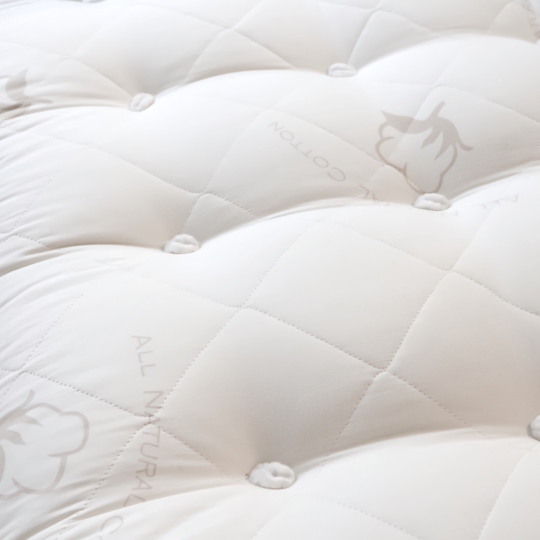
There are 500-1000 chemicals in the average home. Toxic chemicals such as formaldehyde, asbestos, Volatile Organic Compounds (VOCs), flame retardants and BPA are found in a number of common household items including, paper products, paints, bathroom cleaners, water bottles and in some cases, your mattress.
Although exposure to small doses of these chemicals may not be harmful, in combination or in large amounts, these toxins can cause a number of irritations to our respiratory, circulatory, reproductive, cardiovascular, nervous and immune systems.
The last thing you want to do as a parent is put your children at risk for illness. That’s why you should consider these five benefits of an all-natural mattress the next time you go shopping.
Organic mattresses reduce exposure to harmful chemicals
Non-organic mattress materials contain a number of chemicals including boric acid, a common ingredient in pesticides, and decabromodiphenyl oxide, a chemical that can be potentially dangerous for health issues linked to liver, thyroid, and neurological effects. Chemical exposure is especially an issue in new cribs.
Additionally, all mattresses are legally required to meet federal standards that classify them as flame retardant. The issue? Long-term exposure to polybrominated diphenyl ether (PBDE), the main chemical used as a flame retardant, is believed to be linked to various health problems such as hormone disruption, learning and memory impairment and delayed puberty onset, to name a few.
Not to worry though. Mattresses can be made with organic, non-toxic flame retardants that pass federal standards while still providing an excellent place to sleep and dream. This includes:
Certified Organic Wool (naturally fire-resistant)
Organic Cotton (often wrapped in wool)
Natural Latex (made from rubber trees)
Organic mattresses prevent allergies
Often, allergy and respiratory problems are caused by chemical toxins or pesticides that are incorporated in the conventional mattress manufacturing process. Organic mattresses are pesticide-free, chemical-free, and thus, hypo-allergenic.
Not to mention, did you know anywhere from 100,000 to 10 million dust mites could call your mattress home? Studies have shown that dust mites in mattresses can trigger allergy symptoms, so if your child has allergies, there are additional things you should look for in a mattress. A mattress made with natural products is a great place to start—it’s difficult for bacteria and mold to grow on these types of products, and they can get rid of dust mites naturally.
Organic mattresses eliminate chemical off-gassing
You know that pesky “new mattress smell” that’s common with most mattress brands?
This smell, aka chemical off-gassing, comes from the volatile organic compounds, or VOCs, contained in some of the mattress materials. You may recognize it from freshly-painted rooms or brand-new cars. Off-gassing in mattresses is especially common in memory foam and is known to cause headaches.
Although natural mattresses can still have a smell, the good news is that is is non-toxic. Any lingering smells will dissipate naturally with time.
Organic mattresses help regulate body temperature
Do your kids ever wake up in a sweat from a bad dream? Maybe they tend to sleep hot. Another benefit to all-natural mattress materials, like latex, organic cotton and wool, is that they naturally regulate body temperature.
Wool, in particular, is known for wicking away body moisture, keeping your body temperature low. In order to get a good night’s sleep, our core body temperature must drop one to two degrees. That’s why you constantly wake up if you sleep on a mattress that traps heat.
Keep your kids cooler on an organic mattress.
Organic mattresses help make our earth a better place
By purchasing an organic mattress for kids you reduce your carbon footprint which in turn helps our ecosystem. All-natural mattresses are both sustainable and biodegradable.
0 notes
Text
7 Reasons Why Parents Choose a Natural Latex Mattress For Their Children

Everyone don’t expect children to understand the importance of sleep but as parents you must make sure they get a healthy, quality sleep they need.
Sleep is critical for the development of the children to staying healthy, growing, learning, doing well in school, and functioning at their best. One way to give your children the best sleep, is with the right mattress – that’s not only comfortable, but safe as well.
So, if your looking for the best twin mattress for kids, or interested in upgrading their old mattress – then here are some reasons to consider from other parents who choose natural latex mattresses for their children.
If you’ve done your research, you already probably know too well the best natural latex mattress is one that is made from 100% certified pure, organic latex. As they are free of toxic chemicals or synthetic materials which are found in synthetic or blended “latex” mattresses.
Here are 7 common reasons why more and more parents are converting to natural latex mattresses for their kids.
1. Hypoallergenic and anti-microbial – parents love the fact that natural latex is resistant to nasties that can breed in regular beds. Organic latex is naturally resistant to mildew, mold, dust mite and bedbugs which are known to trigger allergies causing your children to cough, sneeze and other respiratory problems. With a large portion of children affected with asthma, this makes choosing a natural latex mattress the safer and natural choice.
2. Extremely durable – natural latex is one of the most resilient materials and will continue to provide long term support and comfort (10 to 25 years) as your kids grow. They will outlast the best innerspring and synthetic foam mattresses that tend to sag and lose shape after a few years. Parents see this as a great investment and value for money, and won’t have to worry about buying a new mattress until their kids become adults (then they can buy their own mattress!).
3. Orthopedic support and comfort – natural latex is highly recommended by chiropractors and sleep specialists for its cushioning comfort to providing orthopedic support and natural spine alignment. Typically a medium density is suited for children or those who are sleep on their sides. A firm density are for larger, adolescent children or those who sleep on their back and stomach positions.
4. Temperature regulating – natural latex are breathable with open-cell structure to promote air circulation where heat and moisture is dissipated. An excellent choice for parents who live in warm climates, looking to provide a cool and comfortable sleep for their children.
5. No flame retardants – to pass flammability standards, some mattress manufacturers use highly toxic flame-retardant chemicals like polybrominated diphenyl ether, better known as PBDE, which do not have to be disclosed in any way. PBDEs, which have been banned by the United Nations as a health hazard, build up in your body over time, and what you absorb or inhale does not go away. The concerning health problems caused by PBDE is associated with brain and reproductive damage, decreased sperm quality, thyroid problems and even cancer at high levels. To reduce any risk of exposure to toxic chemicals from kids, it would be safer to choose a natural latex mattress (Organic latex is naturally fire-resistan.
6. No metal springs – there is a possibility that sleeping on a metal-coil spring mattress can attract electromagnetic radiation, acting as an antenna for incoming radio frequencies from portable phones, cell phones, and wireless devices.
7. No synthetic foams – most mattresses have a layer of synthetic foam aka memory foam (such as polyurethane, polyester, gel which are that are petroleum-based). Yes thats right, made from crude oil which your children may currently sleep on. It is known that these synthetic foams leech out toxic chemicals over time, also known as off-gassing. These toxic chemicals can be absorbed or inhaled as your children sleep, building up in their body causing adverse health effects.
0 notes
Text
Should You Get a Mattress in a Box?
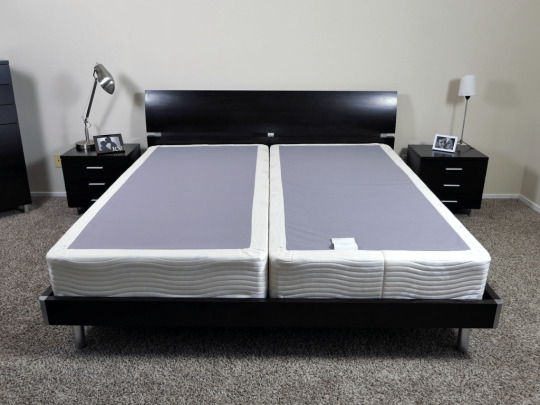
If you are shopping a bed, you may already know that there is a new type of product on the market: the bed-in-a-box. Available through major mattress companies these beds are compressed and rolled up to fit in a large-sized cardboard box for easy shipping. Many customer reviews highlight how comfortable these beds are and affordable the pricing but are they really a better choice than a traditional mattress. Let’s take a look at some of the benefits of a bed-in-a-box.
Benefits of a Bed-in-a-box
These days people are doing a lot more online shopping and getting their goods delivered to them at home. The mattress-in-a-box is a convenient product that allows customers to buy exactly what they want and have it delivered via the mail. Of course, there are many other benefits to getting a mattress-in-a-box, no matter the brand you prefer.
Better Social Distancing
With a bed-in-a-box, the shipping company will simply leave your box at the front door. No need to have movers bring a bulky bed into the home. You don’t have to worry about the potential for COVID infection or keeping social distancing in mind. Plus, if you are worried about transmission of the virus from the box, you can just wait a few days before opening it. Research has found that COVID-19 only survives on cardboard and paper for about 24 hours.
No Need to be at Home
If you do have to leave the house on the regular for work, it can be difficult to set up a convenient appointment for delivery of a traditional bed. But beds in a box come through the mail. Your shipment will be waiting for you at the front door when you get home.
Shop from Home
Whether you are worried about COVID infection or not, shopping from home is just more comfortable. You can look up all the stats online and compare prices at your leisure. Do all the research you want until you find the perfect mattress for your needs.
Brand New Out of the Box
A bed-in-a-box comes to your home straight from the factory, so you know that no one else has touched it or tested it. Plus, it’s fun to roll out the flat-as-a-pancake mattress and watch it inflate after you cut the plastic.
Types of Mattresses in a Box
Manufacturers can get all kinds of mattress for kids into boxes using compression and vacuum sealing of the plastic packaging. Some of the more common types you’ll see include:
Hybrid Beds: These mattresses combine coils with a top layer of memory foam or gel foam.
All Foam Beds: Made with a type of polyurethane foam, these dense beds provide plenty of cushion.
Memory Foam: Another kind of polyurethane foam bedding, memory foam has additional ingredients that make it denser and more elastic. Memory foam beds are designed to envelop and cushion.
Gel Foam: Designed to keep sleepers cool, gel foam comes in varying densities. Some brands may also have a top layer of memory foam for extra support.
#mattress#twin mattress#kids mattress#Kids Mattress Comfortable Online Shopping Innerspring Mattress
0 notes
Text
Do Memory Foam Mattresses Sag?

When you buy a mattress for kids, the last thing you want or expect is for it to start drooping or sinking in certain areas. Sagging mattresses not only look and feel bad, but they can also compromise with your baby health over time.
So, do memory foam mattress sag? Memory foam mattresses are designed not to sag. Their internal structure self expands when the weight is taken off, allowing it to bounce back into shape. However, due to its spongy nature, memory foam can compress faster than other mattress types (especially cheaper ones), so you need to be aware of how to reduce the settlement or ‘sag’ amount to limit the dipping over time.
They provide some handy tips on how to avoid the problems associated with saggy memory foam beds and answer any burning questions you have on the topic. We'll be covering the below:
Sagging mattresses explained
Causes of a sagging mattress
How to spot a sagging mattress
How to prevent and fix a sagging mattress
Sagging Mattresses Explained
A saggy mattress is the loss of tension in the materials of the mattress which could reflect the mattress itself or a poor foundation and bed frame. The design of a memory foam mattress is to mould and adapt to the contours of your body, providing more support and pressure relief than a regular sprung mattress.
Memory foam is made up of the polymer polyurethane, which is combined with hard-working chemicals to give it its viscosity. This is what gives it that soft, sinking feeling when you get into bed. However, over long periods of compression, the memory foam can get squashed and held that way for a long time, hence the dipping.
Causes of Sagging Mattresses
Your memory foam mattress could be sagging for the following reasons:
Frequent use
Sleeping positions
Placing the mattress on an uneven surface
The inner component disintegrating in older mattresses
High moisture content
Inadequate care
How to Spot a Sagging Mattress
To check if your mattress has sagging areas, lay something flat across the top surface of your bed and look for gaps underneath. Common areas are usually where heavy spots of the body lay like the head, hips and shoulders.
How to Prevent and Fix Sagging Mattresses
1. Memory Foam Mattress Topper
Finding it difficult to sleep on your existing mattress but not ready to replace it yet? The simplest and most effective way to solve a sagging memory foam mattress issue is with a mattress topper or mattress pad. While this might not be a permanent fix, it’s cheaper than buying a new mattress and can improve the quality of your sleep by adding an extra comfort layer. A thick topper can also help to fill in slight indents in your mattress.
Worried about compromising the feel of your mattress? We can reassure you, adding a supportive layer to the top of the mattress doesn’t take anything away from the mattress itself.
2. Add More Mattress Support
If you have a saggy memory foam mattress, the problem could be your mattress foundation or bed frame. Memory foam is a heavy mattress material and therefore needs more support. Without sufficient support, you’ll start to see saggy areas - slats with gaps measuring 3 inches or wider can cause the mattress to sag in spaces. It’s best to look at secure and solid bed frames which will provide more support to the mattress.
3. Rotate the Mattress
A simple, yet effective solution is to rotate or flip the mattress. When you turn your mattress it will prevent continuous pressure in the same place and help prevent sagging and can even out the foam be redistributing the weight. If you’ve rotated the mattress and it’s still sinking, try flipping it. It’s recommended to rotate your mattress every 6 months.
#mattress#Innerspring#Kids Mattress Comfortable Online Shopping Innerspring Mattress#Kids Mattress innerspting Mattress Comfortable Online Shopping
0 notes
Text
Memory Foam vs Hybrid Mattress: Which Is Best?

There are a lot of mattress types out there. Whilst navigating your way through the different types, styles and materials, it’s easy to get bogged down with all the choice. That’s why we’ve put together some simple guides on choosing the right mattress type for you. Next up: mattress hybrid vs memory foam. Which is best? From construction and materials to comfort and support - we delve into the differences and benefits of each to help you make the right decision for your own sleeping needs.
What are Hybrid Mattresses?
Let’s start with the basics. A hybrid mattress combines two or more different types of mattress elements in one. For example, a hybrid mattress could be made up of:
An open coil base and foam comfort layer
A pocket sprung base and a memory foam top layer
Springs and different types of mattress foam (reflex, gel, memory foam)
What are the Benefits of a Hybrid Mattress?
As the majority of hybrid mattress for kids are made of a mixture of springs and foam, they tend to be more breathable than some memory foam designs, as there is more space for air to flow. Hybrid mattresses can offer great support and are particularly suited to heavier sleepers or stomach sleepers looking for the perfect balance of comfort and support. Combining pocketed coils and foam can increase the durability of the mattress. By combining different mattress elements in one, hybrid mattresses are great for solving common sleep problems such as overheating or lack of support as you can mix and match what you need from your mattress. To sum up, hybrid mattresses are:
Breathable
Supportive
Durable
Diverse
Suitable for all sleeping positions
What is Memory Foam?
Memory foam softens on contact with body weight and warmth, providing a soft supportive feel that moulds to your individual body shape. The foam allows you to gently sink into the mattress. Full memory foam mattresses do not have springs and are made up of layers of foam.
What are the Benefits of Memory Foam?
Thanks to the foam’s ability to react to body heat and mould to your form, memory foam offers superior pressure relief for pressure points such as hips and shoulders. It also allows your spine to rest in its natural position for optimal alignment. No wonder memory foam is used in medical and orthopaedic mattresses designed to relieve back pain and conditions such as arthritis. Memory foam also provides motion isolation, so if you share your bed with a wriggly partner, you won’t be able to feel them tossing and turning in the night! Finally, memory foam is long-lasting and you don’t get that sag that comes with innerspring mattresses as they age. To sum up, memory foam mattresses:
Correct spine alignment
Relieve pressure
Provide soft comfort
And individualised support
Ideal for slide sleepers
Absorb movement
Are long-lasting
And hypoallergenic
Mattress Hybrid vs Memory Foam: What’s the Difference?
The main difference between hybrid and memory foam mattresses is…
Hybrid mattresses usually contain springs or coils and memory foam mattresses don’t.
This means that hybrid mattresses can be more expensive than foam as they contain more complex constructions. However, the benefits in terms of breathability, durability and enhanced support are worth it if it helps you achieve that perfect night’s sleep!
Which is Better: Hybrid Mattress or Memory Foam?
This depends entirely on your own, personal sleeping needs. Before making the decision, ask yourself these questions…
Do I often feel too hot in the night? If the answer is yes, you may want to choose a breathable hybrid (or a cooling memory mattress)
Are you a side sleeper? If yes, memory foam provides cushioning around joints
Are you a stomach sleeper? A firmer hybrid will help reduce the curvature of the spine
Do you require extra support? Heavier sleepers will need greater support, which hybrids can offer
How soft/ firm do you like your mattress? Memory foam tends to have a softer feel
Do you share a bed? Memory foam can reduce movement disturbance
Do you suffer from back pain? Orthopaedic memory foam is designed specifically to reduce discomfort
#mattress#Innerspring#Innerspring Mattress#kids mattress#Kids Mattress Comfortable Online Shopping Innerspring Mattress
0 notes